-

Aug
07
Interpretive Summary: The impact of excess liver copper concentrations on response to a bovine respiratory disease challenge in lightweight beef-on-dairy crossbred steers
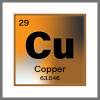
The integration of beef-on-dairy crossbred calves into feedlots remains a challenge due to their heightened susceptibility to disease. Calves raised on commercial dairies are commonly exposed to greater amounts of copper than calves raised in conventional beef production systems, which may contribute to increased inflammation and immune dysfunction.
Read more
-

Jul
31
Washington Roundup - July 2025
.png?sfvrsn=27e85ad1_1)
On July 24th, Secretary of Agriculture Brooke Rollins released Secretary Memorandum: SM 1078-015 which outlines the Department of Agriculture’s Reorganization Plan. Secretary Rollins had indicated such a plan was being developed earlier in the year. While NIFA and ERS were relocated during the first Trump administration, it is expected that the changes will impact all of USDA’s research agencies.
Read more
-

Jul
24
Interpretive Summary: Replacement of soybean meal in diets for growing pigs with corn and synthetic amino acids results in reduced energy and nitrogen digestibility and reduced daily nitrogen retention, but metabolizable energy is not changed
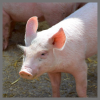
The hypothesis for the experiment was that feeding intact protein from soybean meal (SBM) to growing pigs instead of a combination of corn, SBM and synthetic amino acids (AA) results in greater nitrogen retention and digestible energy without affecting metabolizable energy in the diet. Feeding diets differing in SBM and synthetic AA to growing pigs placed in metabolism crates, it was possible to collect urine and feces from pigs and based on that, the digestibility of energy and nitrogen was calculated.
Read more
-

Jul
24
Interpretive Summary: Dietary nonstructural carbohydrates influence synthesis of mare milk carbohydrates and yield

Mare milk is the primary source of nutrients for neonatal foals and contains various carbohydrates. The primary carbohydrate is lactose, which is an important source of calories for foals. Milk also contains carbohydrates referred to as oligosaccharides. Oligosaccharides are chemically and structurally more complex than lactose and are believed to be important in the gastrointestinal development of neonates.
Read more
-

Jul
24
Interpretive Summary: Effect of cottonseed diet on the performance of meat artificially infected with Haemonchus contortus

Cottonseed (CS) is a readily available resource in the southeast of the United States and has been used by farmers for decades to supplement their livestock. Nevertheless, there is conflicting evidence about the negative or positive effects this resource can have on their animals.
Read more
-

Jul
24
Interpretive Summary: Short communication: genomic kinship, opposing homozygotes and genetic diversity in a selected population of Australian Angus cattle

Beef cattle breed societies worldwide maintain pedigree information on their registered animals tracing back many generations. This extensive data facilitates the estimation of the expected relationship between individual pairs. Concurrently over recent decades, advancements in genotyping technologies have allowed for precise calculations of the actual relationships among any given pairs and the genetic diversity in the entire population.
Read more
-

Jul
24
Interpretive Summary: Phenotypic assessment of F0 generation lactating sows genomically selected for heat stress tolerance

Selection for larger litter sizes has heightened sow milk production demands, increasing metabolic heat production and sensitivity to heat stress, particularly during hotter summer months. This can compromise both sow welfare and piglet growth. Genomic selection for enhanced heat tolerance offers a promising solution, but past approaches have often reduced productivity by focusing on lowering heat gain resulting in decreased metabolic activity.
Read more
-

Jul
24
Interpretive Summary: The inclusion of a companion legume or herb, in combination with perennial ryegrass increased growth performance and reduced enteric methane emissions in lambs postweaning
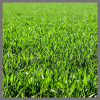
Enhancing the sustainability of pasture-based sheep systems by reducing methane emissions and increasing production is a global priority. In the current study, lambs grazed one of 5 differing sward types, namely, a perennial ryegrass monoculture or one of 4 binary sward mixtures, perennial ryegrass and white clover, perennial ryegrass and red clover, perennial ryegrass and chicory or perennial ryegrass and plantain.
Read more
-

Jul
03
Interpretive Summary: Effects of increasing doses of red yeast rice polyphenol extract on apparent digestibility, antioxidant activity, milk production, and fatty acid in lactating dairy goats
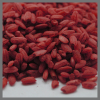
The interest in natural antioxidants has increased because they are considered to be safe, and have greater application potential for consumer’s acceptability of milk products. Polyphenol compounds being a source of natural antioxidants, which have received substantial attention because of their antioxidant activities for consumers. The purpose of this study was to investigate the effect of red yeast rice polyphenol extract on apparent digestibility, antioxidant activity, milk production, and fatty acid in lactating dairy goats.
Read more
-

Jul
03
Interpretive Summary: Chestnut tannins impair ruminal fiber degradation through modulation of cellulolytic bacterial activity in sheep: an in vivo and in vitro investigation

Plant fibers are an important component of animal feed, and the effective degradation of fiber materials is crucial for the health of ruminant animals. Chestnut tannin (CHT) can effectively enhance the antioxidant capacity of animals and reduce methane emissions; however, there is currently limited research on its effect on fiber degradation rate in ruminant animals. This study investigated the effects of different concentrations of CHT on ruminal cellulose-degrading bacteria and cellulase activity in sheep through both in vivo and in vitro experiments.
Read more
-

Jul
03
Interpretive Summary: Novel models for estimating metabolizable energy intake of pigs based on body weight and ambient temperature

Ambient temperature is one of the major environmental factors that affect the voluntary feed intake (VFI) and metabolizable energy intake (MEI) of pigs. When pigs are exposed to above their upper critical temperature, they may reduce VFI, consequently decreasing their growth performance of pigs. To overcome insufficient energy and nutrient intake due to reduced VFI, energy- and nutrient-fortified diets are formulated considering the reduced VFI and fed to pigs.
Read more
-

Jul
03
Interpretive Summary: Economic analysis of randomized controlled trial data: a framework and feedlot cattle case study
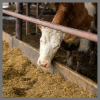
Economic considerations are crucial for livestock producers when deciding whether to adopt new interventions or management strategies. However, research studies often lack consistent, thorough, and well-described economic analyses, making it difficult for stakeholders to make informed decisions. To improve guidance for future economic assessments, economic analysis strategies were reviewed, an example using controlled trial data was performed, and recommendations for future conduct were provided.
Read more
-

Jul
03
Interpretive Summary: Spectral sensing for forage nutritive value determination of cool season, grass pastures during the grazing season

Despite existing methods to determine forage nutritive value, most extensive beef producers in the Southeastern United States do not submit forage samples for laboratory analysis, citing expense and labor challenges. In response to these challenges, we evaluated the ability of a low-cost, easy-to-use spectral sensing system to predict the forage nutritive value of grass pastures.
Read more
-

Jul
03
Interpretive Summary: Hydrolyzed chicken liver and increasing crude protein levels on palatability, digestibility, and intestinal fermentation products of cats

Replacing conventional proteins with hydrolyzed proteins in diets for companion animals has demonstrated clinical and nutritional benefits, such as improved digestibility and reduced fermentation products in the large intestine. Based on this, the current study evaluated the effects of 2 protein sources (hydrolyzed chicken liver (HCL) and poultry byproduct meal) and 3 crude protein concentrations (24%, 32%, and 40%) on digestibility, fecal and urinary characteristics, fecal fermentative end products, and palatability of healthy adult cats.
Read more
-

Jun
26
Washington Roundup – June 2025

On June 23rd, the House Appropriations Committee approved its version of FY 2026 agriculture appropriations by at vote of 35-27. The House bill provides a total discretionary allocation of $25.523 billion, which is $1.163 billion (4.2%) below the Fiscal Year 2025 enacted level. The House bill does not follow the Administration’s request for major cuts to USDA research, education and economics programs.
Read more
-

Jun
19
Dear American Society of Animal Science members,
The publications committee is working to meet the needs of the society. Over this past year, two topics have arisen with respect to the publication of manuscripts in the society’s journals. The committee would like to get your input on these topics that could dramatically impact the American Society of Animal Science.
Read more
-

Jun
19
Interpretive Summary: The relationship of lactating beef cow metabolizable energy intake to energy partitioning, milk composition, and calf performance
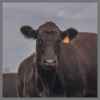
Efficient beef production is crucial for meeting global food demands. Most of the feed consumed by beef cows is used for essential bodily functions like breathing, maintaining heart rate, and regulating body temperature. The remaining energy is partitioned into milk production, body weight gain, and pregnancy.
Read more
-

Jun
19
Interpretive Summary: The standardized ileal digestible lysine-to-net energy ratio in the diets of lactating primiparous sows to optimize maternal nitrogen retention is dynamic but does not impact piglet performance
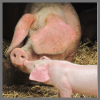
Fifty-five first lactation sows were used to evaluate how the dietary standardized ileal digestible (SID) Lys-to-net energy (NE) ratio affected nitrogen use by the sow and piglet growth performance. Sows were randomly assigned to one of five diets that had equally spaced and increasing SID Lys-to-NE ratios from 2.85 and 5.51 g SID Lys/Mcal NE that were fed for a 24-d lactation.
Read more
-

Jun
19
Interpretive Summary: Effects of supplemental seaweed extract on antioxidant properties, loose stools, gut microbiota, and its metabolite composition in adult dogs
f9f6e145-0d94-48bc-b318-d77602739afe.png?sfvrsn=22ba5ad1_1)
Supplementing prebiotics, particularly plant polysaccharides, in pet food is currently regarded as an important approach to enhancing gut health. Polysaccharides can produce abundant short-chain fatty acids (SCFAs) in the large intestine, thereby benefiting health.
Read more
-

Jun
19
Interpretive Summary: Rein tension and heart rate variability in horses: an experiment on experience
50ca978c-3ace-485b-b3a4-6ef4add6eb0d.png?sfvrsn=f9ba5ad1_1)
This study explores how different levels of rein tension affect the stress response and heart activity in horses, focusing on the differences between younger and older horses. We aimed to understand whether the experience of older horses makes them less sensitive to rein tension compared to younger ones.
Read more
 AugInterpretive Summary: The impact of excess liver copper concentrations on response to a bovine respiratory disease challenge in lightweight beef-on-dairy crossbred steers
AugInterpretive Summary: The impact of excess liver copper concentrations on response to a bovine respiratory disease challenge in lightweight beef-on-dairy crossbred steers The integration of beef-on-dairy crossbred calves into feedlots remains a challenge due to their heightened susceptibility to disease. Calves raised on commercial dairies are commonly exposed to greater amounts of copper than calves raised in conventional beef production systems, which may contribute to increased inflammation and immune dysfunction.
The integration of beef-on-dairy crossbred calves into feedlots remains a challenge due to their heightened susceptibility to disease. Calves raised on commercial dairies are commonly exposed to greater amounts of copper than calves raised in conventional beef production systems, which may contribute to increased inflammation and immune dysfunction. JulWashington Roundup - July 2025
JulWashington Roundup - July 2025.png?sfvrsn=27e85ad1_1) On July 24th, Secretary of Agriculture Brooke Rollins released Secretary Memorandum: SM 1078-015 which outlines the Department of Agriculture’s Reorganization Plan. Secretary Rollins had indicated such a plan was being developed earlier in the year. While NIFA and ERS were relocated during the first Trump administration, it is expected that the changes will impact all of USDA’s research agencies.
On July 24th, Secretary of Agriculture Brooke Rollins released Secretary Memorandum: SM 1078-015 which outlines the Department of Agriculture’s Reorganization Plan. Secretary Rollins had indicated such a plan was being developed earlier in the year. While NIFA and ERS were relocated during the first Trump administration, it is expected that the changes will impact all of USDA’s research agencies. JulInterpretive Summary: Replacement of soybean meal in diets for growing pigs with corn and synthetic amino acids results in reduced energy and nitrogen digestibility and reduced daily nitrogen retention, but metabolizable energy is not changed
JulInterpretive Summary: Replacement of soybean meal in diets for growing pigs with corn and synthetic amino acids results in reduced energy and nitrogen digestibility and reduced daily nitrogen retention, but metabolizable energy is not changed The hypothesis for the experiment was that feeding intact protein from soybean meal (SBM) to growing pigs instead of a combination of corn, SBM and synthetic amino acids (AA) results in greater nitrogen retention and digestible energy without affecting metabolizable energy in the diet. Feeding diets differing in SBM and synthetic AA to growing pigs placed in metabolism crates, it was possible to collect urine and feces from pigs and based on that, the digestibility of energy and nitrogen was calculated.
The hypothesis for the experiment was that feeding intact protein from soybean meal (SBM) to growing pigs instead of a combination of corn, SBM and synthetic amino acids (AA) results in greater nitrogen retention and digestible energy without affecting metabolizable energy in the diet. Feeding diets differing in SBM and synthetic AA to growing pigs placed in metabolism crates, it was possible to collect urine and feces from pigs and based on that, the digestibility of energy and nitrogen was calculated. JulInterpretive Summary: Dietary nonstructural carbohydrates influence synthesis of mare milk carbohydrates and yield
JulInterpretive Summary: Dietary nonstructural carbohydrates influence synthesis of mare milk carbohydrates and yield Mare milk is the primary source of nutrients for neonatal foals and contains various carbohydrates. The primary carbohydrate is lactose, which is an important source of calories for foals. Milk also contains carbohydrates referred to as oligosaccharides. Oligosaccharides are chemically and structurally more complex than lactose and are believed to be important in the gastrointestinal development of neonates.
Mare milk is the primary source of nutrients for neonatal foals and contains various carbohydrates. The primary carbohydrate is lactose, which is an important source of calories for foals. Milk also contains carbohydrates referred to as oligosaccharides. Oligosaccharides are chemically and structurally more complex than lactose and are believed to be important in the gastrointestinal development of neonates. JulInterpretive Summary: Effect of cottonseed diet on the performance of meat artificially infected with Haemonchus contortus
JulInterpretive Summary: Effect of cottonseed diet on the performance of meat artificially infected with Haemonchus contortus Cottonseed (CS) is a readily available resource in the southeast of the United States and has been used by farmers for decades to supplement their livestock. Nevertheless, there is conflicting evidence about the negative or positive effects this resource can have on their animals.
Cottonseed (CS) is a readily available resource in the southeast of the United States and has been used by farmers for decades to supplement their livestock. Nevertheless, there is conflicting evidence about the negative or positive effects this resource can have on their animals. JulInterpretive Summary: Short communication: genomic kinship, opposing homozygotes and genetic diversity in a selected population of Australian Angus cattle
JulInterpretive Summary: Short communication: genomic kinship, opposing homozygotes and genetic diversity in a selected population of Australian Angus cattle Beef cattle breed societies worldwide maintain pedigree information on their registered animals tracing back many generations. This extensive data facilitates the estimation of the expected relationship between individual pairs. Concurrently over recent decades, advancements in genotyping technologies have allowed for precise calculations of the actual relationships among any given pairs and the genetic diversity in the entire population.
Beef cattle breed societies worldwide maintain pedigree information on their registered animals tracing back many generations. This extensive data facilitates the estimation of the expected relationship between individual pairs. Concurrently over recent decades, advancements in genotyping technologies have allowed for precise calculations of the actual relationships among any given pairs and the genetic diversity in the entire population. JulInterpretive Summary: Phenotypic assessment of F0 generation lactating sows genomically selected for heat stress tolerance
JulInterpretive Summary: Phenotypic assessment of F0 generation lactating sows genomically selected for heat stress tolerance Selection for larger litter sizes has heightened sow milk production demands, increasing metabolic heat production and sensitivity to heat stress, particularly during hotter summer months. This can compromise both sow welfare and piglet growth. Genomic selection for enhanced heat tolerance offers a promising solution, but past approaches have often reduced productivity by focusing on lowering heat gain resulting in decreased metabolic activity.
Selection for larger litter sizes has heightened sow milk production demands, increasing metabolic heat production and sensitivity to heat stress, particularly during hotter summer months. This can compromise both sow welfare and piglet growth. Genomic selection for enhanced heat tolerance offers a promising solution, but past approaches have often reduced productivity by focusing on lowering heat gain resulting in decreased metabolic activity. JulInterpretive Summary: The inclusion of a companion legume or herb, in combination with perennial ryegrass increased growth performance and reduced enteric methane emissions in lambs postweaning
JulInterpretive Summary: The inclusion of a companion legume or herb, in combination with perennial ryegrass increased growth performance and reduced enteric methane emissions in lambs postweaning Enhancing the sustainability of pasture-based sheep systems by reducing methane emissions and increasing production is a global priority. In the current study, lambs grazed one of 5 differing sward types, namely, a perennial ryegrass monoculture or one of 4 binary sward mixtures, perennial ryegrass and white clover, perennial ryegrass and red clover, perennial ryegrass and chicory or perennial ryegrass and plantain.
Enhancing the sustainability of pasture-based sheep systems by reducing methane emissions and increasing production is a global priority. In the current study, lambs grazed one of 5 differing sward types, namely, a perennial ryegrass monoculture or one of 4 binary sward mixtures, perennial ryegrass and white clover, perennial ryegrass and red clover, perennial ryegrass and chicory or perennial ryegrass and plantain. JulInterpretive Summary: Effects of increasing doses of red yeast rice polyphenol extract on apparent digestibility, antioxidant activity, milk production, and fatty acid in lactating dairy goats
JulInterpretive Summary: Effects of increasing doses of red yeast rice polyphenol extract on apparent digestibility, antioxidant activity, milk production, and fatty acid in lactating dairy goats The interest in natural antioxidants has increased because they are considered to be safe, and have greater application potential for consumer’s acceptability of milk products. Polyphenol compounds being a source of natural antioxidants, which have received substantial attention because of their antioxidant activities for consumers. The purpose of this study was to investigate the effect of red yeast rice polyphenol extract on apparent digestibility, antioxidant activity, milk production, and fatty acid in lactating dairy goats.
The interest in natural antioxidants has increased because they are considered to be safe, and have greater application potential for consumer’s acceptability of milk products. Polyphenol compounds being a source of natural antioxidants, which have received substantial attention because of their antioxidant activities for consumers. The purpose of this study was to investigate the effect of red yeast rice polyphenol extract on apparent digestibility, antioxidant activity, milk production, and fatty acid in lactating dairy goats. JulInterpretive Summary: Chestnut tannins impair ruminal fiber degradation through modulation of cellulolytic bacterial activity in sheep: an in vivo and in vitro investigation
JulInterpretive Summary: Chestnut tannins impair ruminal fiber degradation through modulation of cellulolytic bacterial activity in sheep: an in vivo and in vitro investigation Plant fibers are an important component of animal feed, and the effective degradation of fiber materials is crucial for the health of ruminant animals. Chestnut tannin (CHT) can effectively enhance the antioxidant capacity of animals and reduce methane emissions; however, there is currently limited research on its effect on fiber degradation rate in ruminant animals. This study investigated the effects of different concentrations of CHT on ruminal cellulose-degrading bacteria and cellulase activity in sheep through both in vivo and in vitro experiments.
Plant fibers are an important component of animal feed, and the effective degradation of fiber materials is crucial for the health of ruminant animals. Chestnut tannin (CHT) can effectively enhance the antioxidant capacity of animals and reduce methane emissions; however, there is currently limited research on its effect on fiber degradation rate in ruminant animals. This study investigated the effects of different concentrations of CHT on ruminal cellulose-degrading bacteria and cellulase activity in sheep through both in vivo and in vitro experiments. JulInterpretive Summary: Novel models for estimating metabolizable energy intake of pigs based on body weight and ambient temperature
JulInterpretive Summary: Novel models for estimating metabolizable energy intake of pigs based on body weight and ambient temperature Ambient temperature is one of the major environmental factors that affect the voluntary feed intake (VFI) and metabolizable energy intake (MEI) of pigs. When pigs are exposed to above their upper critical temperature, they may reduce VFI, consequently decreasing their growth performance of pigs. To overcome insufficient energy and nutrient intake due to reduced VFI, energy- and nutrient-fortified diets are formulated considering the reduced VFI and fed to pigs.
Ambient temperature is one of the major environmental factors that affect the voluntary feed intake (VFI) and metabolizable energy intake (MEI) of pigs. When pigs are exposed to above their upper critical temperature, they may reduce VFI, consequently decreasing their growth performance of pigs. To overcome insufficient energy and nutrient intake due to reduced VFI, energy- and nutrient-fortified diets are formulated considering the reduced VFI and fed to pigs. JulInterpretive Summary: Economic analysis of randomized controlled trial data: a framework and feedlot cattle case study
JulInterpretive Summary: Economic analysis of randomized controlled trial data: a framework and feedlot cattle case study Economic considerations are crucial for livestock producers when deciding whether to adopt new interventions or management strategies. However, research studies often lack consistent, thorough, and well-described economic analyses, making it difficult for stakeholders to make informed decisions. To improve guidance for future economic assessments, economic analysis strategies were reviewed, an example using controlled trial data was performed, and recommendations for future conduct were provided.
Economic considerations are crucial for livestock producers when deciding whether to adopt new interventions or management strategies. However, research studies often lack consistent, thorough, and well-described economic analyses, making it difficult for stakeholders to make informed decisions. To improve guidance for future economic assessments, economic analysis strategies were reviewed, an example using controlled trial data was performed, and recommendations for future conduct were provided. JulInterpretive Summary: Spectral sensing for forage nutritive value determination of cool season, grass pastures during the grazing season
JulInterpretive Summary: Spectral sensing for forage nutritive value determination of cool season, grass pastures during the grazing season Despite existing methods to determine forage nutritive value, most extensive beef producers in the Southeastern United States do not submit forage samples for laboratory analysis, citing expense and labor challenges. In response to these challenges, we evaluated the ability of a low-cost, easy-to-use spectral sensing system to predict the forage nutritive value of grass pastures.
Despite existing methods to determine forage nutritive value, most extensive beef producers in the Southeastern United States do not submit forage samples for laboratory analysis, citing expense and labor challenges. In response to these challenges, we evaluated the ability of a low-cost, easy-to-use spectral sensing system to predict the forage nutritive value of grass pastures. JulInterpretive Summary: Hydrolyzed chicken liver and increasing crude protein levels on palatability, digestibility, and intestinal fermentation products of cats
JulInterpretive Summary: Hydrolyzed chicken liver and increasing crude protein levels on palatability, digestibility, and intestinal fermentation products of cats Replacing conventional proteins with hydrolyzed proteins in diets for companion animals has demonstrated clinical and nutritional benefits, such as improved digestibility and reduced fermentation products in the large intestine. Based on this, the current study evaluated the effects of 2 protein sources (hydrolyzed chicken liver (HCL) and poultry byproduct meal) and 3 crude protein concentrations (24%, 32%, and 40%) on digestibility, fecal and urinary characteristics, fecal fermentative end products, and palatability of healthy adult cats.
Replacing conventional proteins with hydrolyzed proteins in diets for companion animals has demonstrated clinical and nutritional benefits, such as improved digestibility and reduced fermentation products in the large intestine. Based on this, the current study evaluated the effects of 2 protein sources (hydrolyzed chicken liver (HCL) and poultry byproduct meal) and 3 crude protein concentrations (24%, 32%, and 40%) on digestibility, fecal and urinary characteristics, fecal fermentative end products, and palatability of healthy adult cats. JunWashington Roundup – June 2025
JunWashington Roundup – June 2025 On June 23rd, the House Appropriations Committee approved its version of FY 2026 agriculture appropriations by at vote of 35-27. The House bill provides a total discretionary allocation of $25.523 billion, which is $1.163 billion (4.2%) below the Fiscal Year 2025 enacted level. The House bill does not follow the Administration’s request for major cuts to USDA research, education and economics programs.
On June 23rd, the House Appropriations Committee approved its version of FY 2026 agriculture appropriations by at vote of 35-27. The House bill provides a total discretionary allocation of $25.523 billion, which is $1.163 billion (4.2%) below the Fiscal Year 2025 enacted level. The House bill does not follow the Administration’s request for major cuts to USDA research, education and economics programs. JunDear American Society of Animal Science members,
JunDear American Society of Animal Science members, JunInterpretive Summary: The relationship of lactating beef cow metabolizable energy intake to energy partitioning, milk composition, and calf performance
JunInterpretive Summary: The relationship of lactating beef cow metabolizable energy intake to energy partitioning, milk composition, and calf performance Efficient beef production is crucial for meeting global food demands. Most of the feed consumed by beef cows is used for essential bodily functions like breathing, maintaining heart rate, and regulating body temperature. The remaining energy is partitioned into milk production, body weight gain, and pregnancy.
Efficient beef production is crucial for meeting global food demands. Most of the feed consumed by beef cows is used for essential bodily functions like breathing, maintaining heart rate, and regulating body temperature. The remaining energy is partitioned into milk production, body weight gain, and pregnancy. JunInterpretive Summary: The standardized ileal digestible lysine-to-net energy ratio in the diets of lactating primiparous sows to optimize maternal nitrogen retention is dynamic but does not impact piglet performance
JunInterpretive Summary: The standardized ileal digestible lysine-to-net energy ratio in the diets of lactating primiparous sows to optimize maternal nitrogen retention is dynamic but does not impact piglet performance Fifty-five first lactation sows were used to evaluate how the dietary standardized ileal digestible (SID) Lys-to-net energy (NE) ratio affected nitrogen use by the sow and piglet growth performance. Sows were randomly assigned to one of five diets that had equally spaced and increasing SID Lys-to-NE ratios from 2.85 and 5.51 g SID Lys/Mcal NE that were fed for a 24-d lactation.
Fifty-five first lactation sows were used to evaluate how the dietary standardized ileal digestible (SID) Lys-to-net energy (NE) ratio affected nitrogen use by the sow and piglet growth performance. Sows were randomly assigned to one of five diets that had equally spaced and increasing SID Lys-to-NE ratios from 2.85 and 5.51 g SID Lys/Mcal NE that were fed for a 24-d lactation. JunInterpretive Summary: Effects of supplemental seaweed extract on antioxidant properties, loose stools, gut microbiota, and its metabolite composition in adult dogs
JunInterpretive Summary: Effects of supplemental seaweed extract on antioxidant properties, loose stools, gut microbiota, and its metabolite composition in adult dogsf9f6e145-0d94-48bc-b318-d77602739afe.png?sfvrsn=22ba5ad1_1) Supplementing prebiotics, particularly plant polysaccharides, in pet food is currently regarded as an important approach to enhancing gut health. Polysaccharides can produce abundant short-chain fatty acids (SCFAs) in the large intestine, thereby benefiting health.
Supplementing prebiotics, particularly plant polysaccharides, in pet food is currently regarded as an important approach to enhancing gut health. Polysaccharides can produce abundant short-chain fatty acids (SCFAs) in the large intestine, thereby benefiting health. JunInterpretive Summary: Rein tension and heart rate variability in horses: an experiment on experience
JunInterpretive Summary: Rein tension and heart rate variability in horses: an experiment on experience50ca978c-3ace-485b-b3a4-6ef4add6eb0d.png?sfvrsn=f9ba5ad1_1) This study explores how different levels of rein tension affect the stress response and heart activity in horses, focusing on the differences between younger and older horses. We aimed to understand whether the experience of older horses makes them less sensitive to rein tension compared to younger ones.
This study explores how different levels of rein tension affect the stress response and heart activity in horses, focusing on the differences between younger and older horses. We aimed to understand whether the experience of older horses makes them less sensitive to rein tension compared to younger ones.



